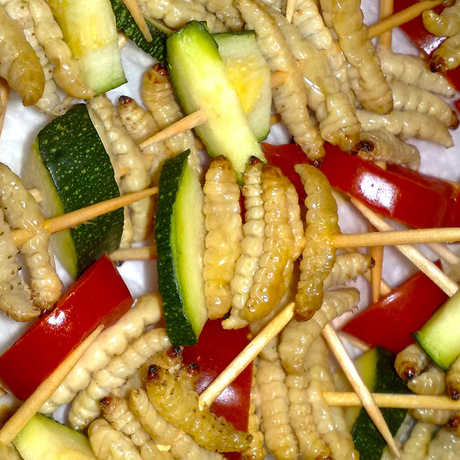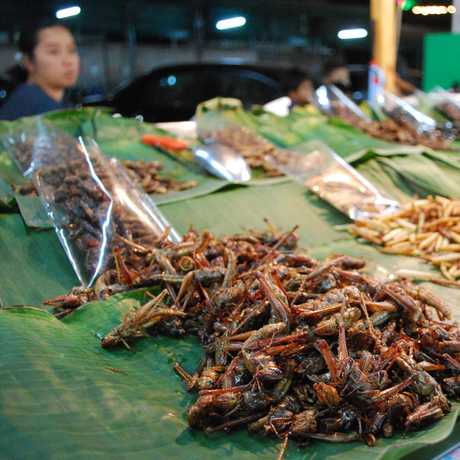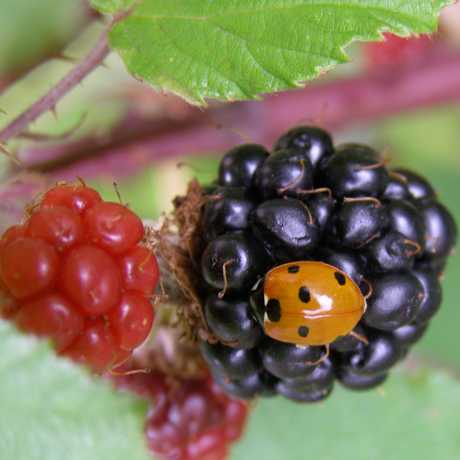Did you know that of all of the water on Earth, 97% of it is salty ocean water? This leaves only 3% of the water on Earth for us to use for drinking, bathing, cleaning, irrigation, and other freshwater uses. Can we conserve our precious freshwater resources by changing the way we eat?
Designing Solutions
Activity: How Much Water Do You Eat?
In this activity, students will explore how much water goes into producing different kinds of vegetables, fruits, legumes, grains, dairy products, and meats. They will be challenged to design a balanced and nutritious meal that uses minimal amounts of water. After your students work through this activity once, add Edible Insect Cards to their collection of food cards and challenge them to create one more balanced and nutritious meal using minimal water with this new protein source.
As a class, discuss how the various meals created compared before and after the edible bug cards were introduced. Can you create a meal that has as much protein as beef but uses less water?
- Teacher tip: This activity deals solely with the water footprints of various foods. Your students can use the USDA Food Composition Database to explore the nutritional value of these various foods to make more informed decisions about what constitutes a balanced and healthy meal.
Photo credit: David Orban



